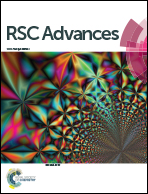Rapid and non-invasive diagnosis of coronary artery disease via clinical laboratory parameters and 1H-NMR spectra of human blood plasma
Abstract
Coronary artery disease (CAD), one of the most common fatal diseases in the world, was examined in the present study via the investigation of the 1H-NMR spectra of human blood plasma and clinical laboratory parameters, with the aim of early disease diagnosis. Partial least squares-discriminant analysis (PLS-DA), a common supervised pattern recognition method, assisted by a genetic algorithm (GA) based feature selection procedure, was used to classify CAD− and CAD+ individuals based on spectral patterns and clinical parameters. Meanwhile, unsupervised pattern recognition methods (i.e., hierarchical cluster analysis (HCA) and principal component analysis (PCA)) were implemented to precisely visualize and examine the spectroscopic and clinical datasets. GA and ANOVA techniques were employed to select the discriminant and most effective clinical parameters for recognizing CAD− and CAD+ samples. Finally, the calculated classification models were successfully able to distinguish between CAD− and CAD+ individuals using 1H-NMR spectra and clinical laboratory parameters as a safe, economic, simple and also non-invasive method in comparison with coronary angiography for CAD diagnosis.


 Please wait while we load your content...
Please wait while we load your content...